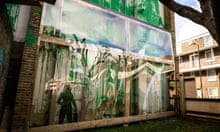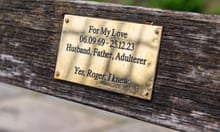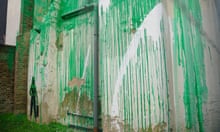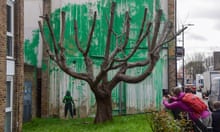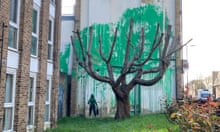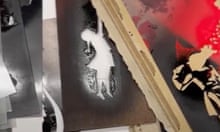In hindsight, it looked too good to be true: the chance to buy Banksy’s first foray into the lucrative world of non-fungible tokens (NFTs) for only a fraction of his soaring market prices.
The piece (called Great Redistribution of the Climate Change Disaster) did enough to convince a buyer – confusingly named Pranksy – to pay the equivalent of hundreds of thousands of pounds only to have the currency returned after what appeared to be an elaborate hoax by a scammer.
It has also been called a publicity stunt, but whatever the motivations the incident has shone a light on the vulnerabilities of NFT trading, which has already been criticised by artists who say their work has been sold without their knowledge or consent.
Q&AWhat are non-fungible tokens (NFTs)?
Show
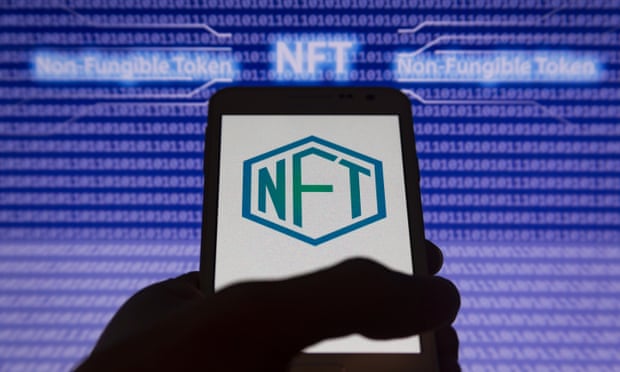
Non-fungible tokens, known as NFTs, are electronic identifiers confirming a digital collectible is real by recording the details on a digital ledger or database known as a blockchain. The tokens have swept the online collecting world and are an offshoot of the boom in cryptocurrencies.
In economics, fungible means an item is interchangeable, like cash, where one £10 note is worth the same as another £10 note and can be exchanged for it without losing any value. Non-fungible tokens however are unique, and they are used to prove that an item is one of a kind and are aimed at solving a problem central to digital collectibles: how to claim ownership of something that can be easily and endlessly duplicated.
Musician and artist Grimes sold a collection of digital artworks for almost $6m (£4.3m) using the technology, while Jack Dorsey, the Twitter CEO, put his first ever tweet – “just setting up my twttr” – up for online auction as an NFT, with bids reaching as high as $2.5m.
But while the very technology of NFTs prevents them from being duplicated without permission, there’s nothing inherent to the sector that controls who can make an NFT in the first place – a fact that has caused dismay to some artists, who have found their work ending up in the “control” of people who had nothing to do with its creation.
There has also been criticism of the environmental impact caused by the computer processing power needed to validate the blockchain, a charge also levelled at cryptocurrencies.
The image – which features a figure smoking in front of some industrial chimneys in an apparent comment on the climate impact of digital currency and art – was put up for sale on the Open Sea platform, the “eBay of NFTs”.
Banksy’s official site did have a since-deleted page called NFT, which included a link to an auction site selling a piece of the same name.
It didn’t look anything like a Banksy, but the fraudulent link convinced Pranksy – who is known for his collection of NBA Top Shots NFTs – to bid the equivalent of £244,000 in cryptocurrency. He said he knew he had been scammed when the bid was immediately accepted.
“The fact it was hosted on banksy.co.uk was my reason for bidding,” Pranksy said. “I presumed it was a three-day auction and when my bid was accepted I pretty much knew then it must be fake.”
He says the seller eventually returned all the money with the exception of the transaction fee of around £5,000.
The incident undermines one of the things that make NFTs so attractive: the fact that they offer cryptographically secure authenticity. But the problem is that authenticity is dependent on the seller being who they say they are.
Other artists, including Damien Hirst, have embraced the NFT market, but some have had their work sold without permission, and Banksy’s team were quick to distance the artist from the fake. “The artist Banksy has not created any NFT artworks,” his team said in a statement, without explaining how his site was compromised.
The fact that some NFT services make it easy to “tokenise” other people’s content has worried artists. For example, some let users turn any tweet into a tradable digital asset, while artworks have become a popular items for tokenisation.
Pranksy, says that despite his name he wouldn’t conduct a hoax which “could damage any future potential to chat with Banksy’s team or any other fine artists about NFTs”. Instead he says the hoax, and quick return of the money, point to someone who could be looking to make a bigger point: by highlighting the vulnerabilities of NFT trading.
“I did not expect anything to be returned, it seems the hacker had more intentions than money,” said Pranksy. When asked what those motivations could be he added “to point out the vulnerabilities in the website and with validation within NFTs?”.
Banksy’s work has been the subject of NFT controversy before. The Burned Banksy NFT was sold for around £300,000 and featured an image of a Banksy print titled Morons. Originally sold in an edition of 500, the tokenised print was publicly burned as the token was minted, which its creators argued “moved the value of the physical piece on to the NFT”.
Pranksy said he hoped to hear back from Banksy’s team about his website’s security and if it was hacked, but added the incident had not dampened his enthusiasm for NFTs.
He said: “I’ve not lost faith in NFTs after the incident. I’ll just get a little less excited when I see one linked via an artist’s website.”

